#107
February, 2009
|

This page is written monthly
by
Harumi Okochi.
Sometimes Harumi's friends join.
We'd be happy if you look
at
our previous issues.
#1 GREETING
|
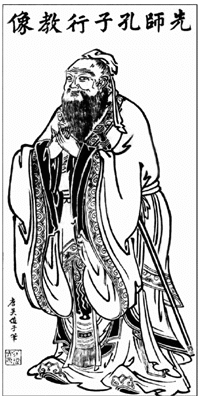
Confucius |
|
Confucian Temple in Taku City
|
Hello, friends.
How are you?
The cold season is the time for reminiscence. So, shall I talk about something
old?
Have you visited Yushima Seido in Tokyo? No? Well, these days even Japanese
do not often visit the place. But in Edo Period, even in Meiji, Taisho,
early Showa Era, many people went to the Confucian Temple. It was a temple
where young students pray for their attainments in study. Also, a famous
writer of Meiji Era, Izumi Kyoka, wrote a novel, "Onna-keizu, the
white plum blossom in Yushima Temple", which was made into a movie,
and much tear was flown from Japanese women's eyes.
Now, please look at the explanation of Yushima Seido from Wikipedia.
|
|
Yushima Seidō (湯島聖堂, Yushima
Seidō?),
located in the Yushima neighbourhood of Bunkyō, Tokyo, Japan, was
constructed as a Confucian temple in the Genroku era of the Edo period (end of the 17th century).
Tokugawa bureaucrat training center
The Yushima Seidō has its origins in a private Confucian temple, the
Sensei-den (先聖殿), constructed in 1630 by the neo-Confucian scholar Hayashi Razan (1583-1657)
in his grounds at Shinobi-ga-oka (now in Ueno Park). The fifth Tokugawa shogun, Tsunayoshi, moved the building to its present site in 1690, where it became the Taiseiden
(大成殿) of Yushima Seidō. The Hayashi school of Confucianism moved at the
same time.
Under the Kansei Edict,
which made neo-Confucianism the official philosophy of Japan, the Hayashi school
was transformed into a state-run school under the control of the shogunate in
1797. The school was known as the Shōhei-zaka Gakumonsho or Shōheikō, after
Confucius’s birthplace at Changping ==(昌平, pronounced Shōhei in Japanese).
During the time of the Tokugawa shogunate, the school attracted many men of
talent, but it was closed in 1871 after the Meiji Restoration.
|
Now you know what Confucian Temple means to Japanese history and minds.
The reason why I talk about Yushima Seido is that in this Saga Prefecture,
there is also a Confucian Temple, Taku Seibyo, near Karatsu. It is about
50 minutes' drive from Karatsu to Taku City.
3 months ago, I visited Taku Seibyo after 50 years. When I visited first
time 50 years ago, I was a highschool student. Now I am a grandmother who
prays for grandson's growth to be a wise man.
I hope you visit Taku Seibyo on this web page. Sorry, the pictures are
not very clear, because of my cheap camera, and also it was getting dark.
|
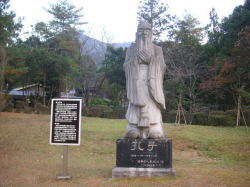 |
Image of Confucius in Taku Seibyo |
| The gate to Taku Seibyo |
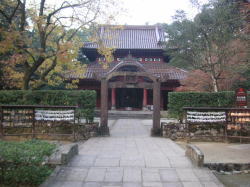 |
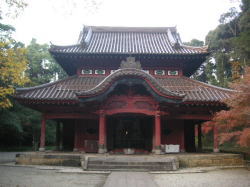 |
The Temple
A little different from Buddhism temples |
| Inside the Temple |
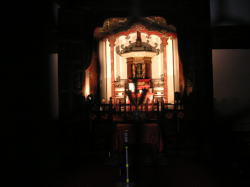 |
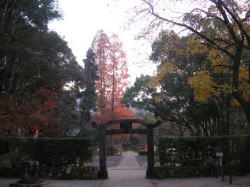 |
The gate's shape is also a little different from Japanese Shinto Torii |
| This building was a school next to the temple where in Edo Era, the Lord
Taku made young Samurais study Confucianism.Confucianism was the logic
on which Tokugawa Bakufu built its long peace and safety. |
 |
In February, just before entrance examinations to schools, Japanese students
and parents go to these temples and shrines which are thought to have power
in the world of study.
If you have someone who is going to have examinations, visit such a place
in your neighborhood.
I wish you a good luck!
See you next month.
|
|
Thank you very much
for visiting this page.
I hope you will return next month.
Yours, Harumi
Okochi
Proprietress of
Yoyokaku
|

Mail to Harumi
Okochi |
|







